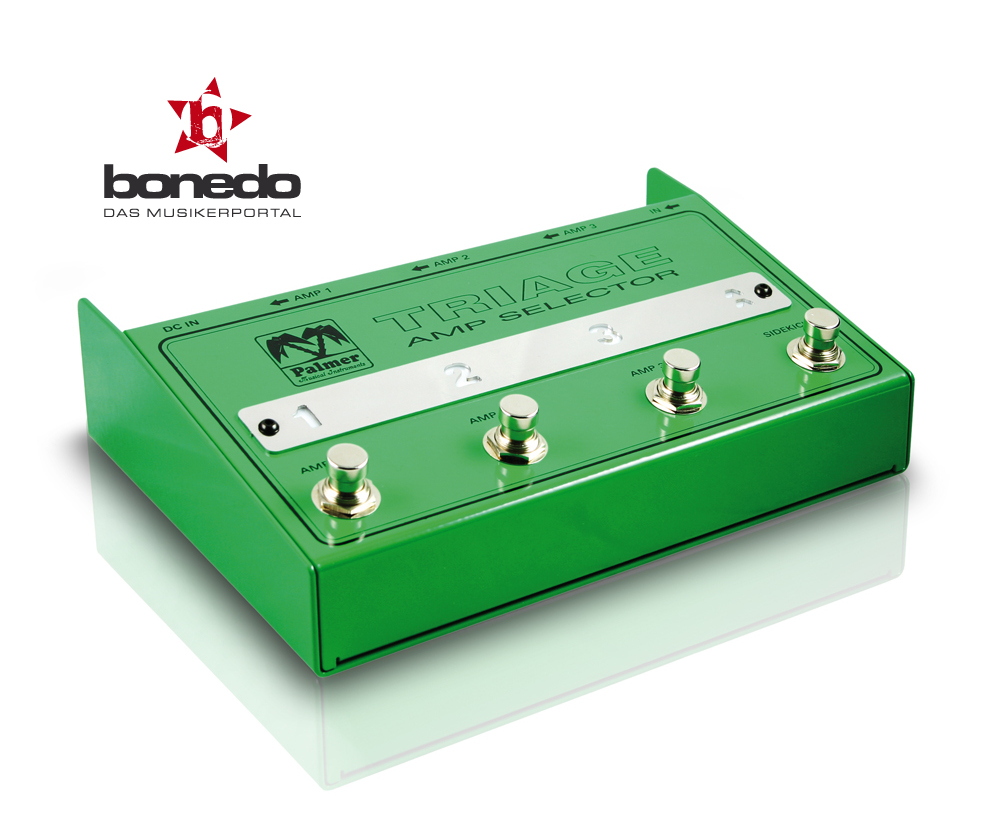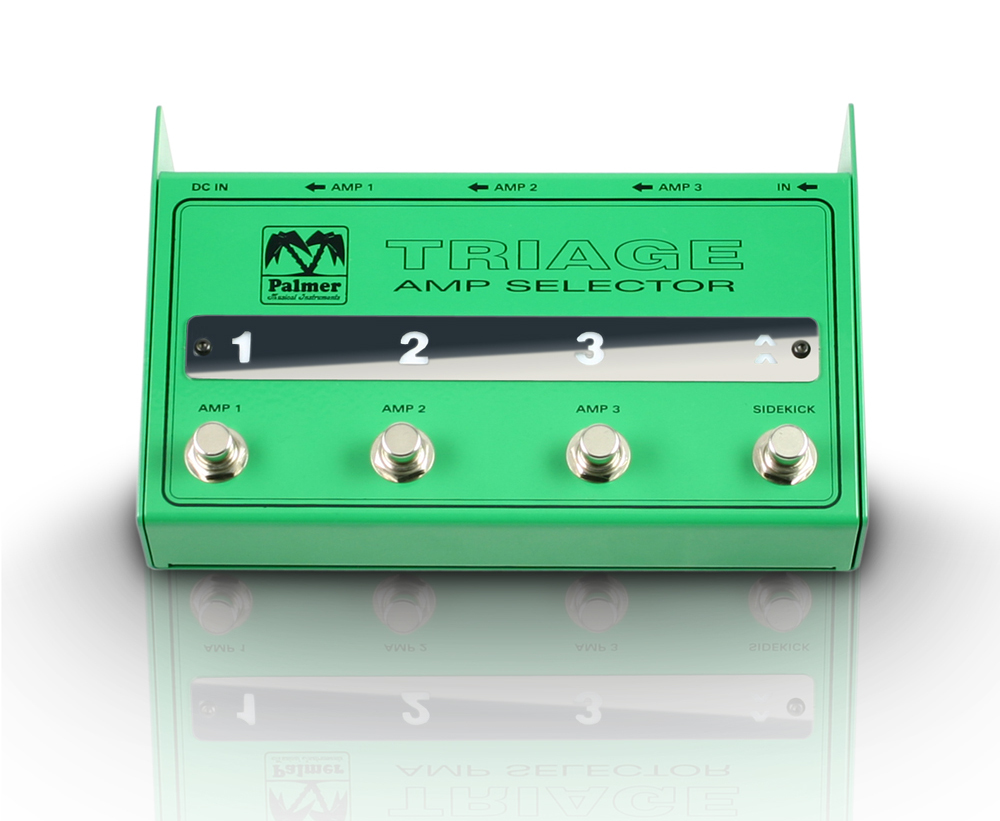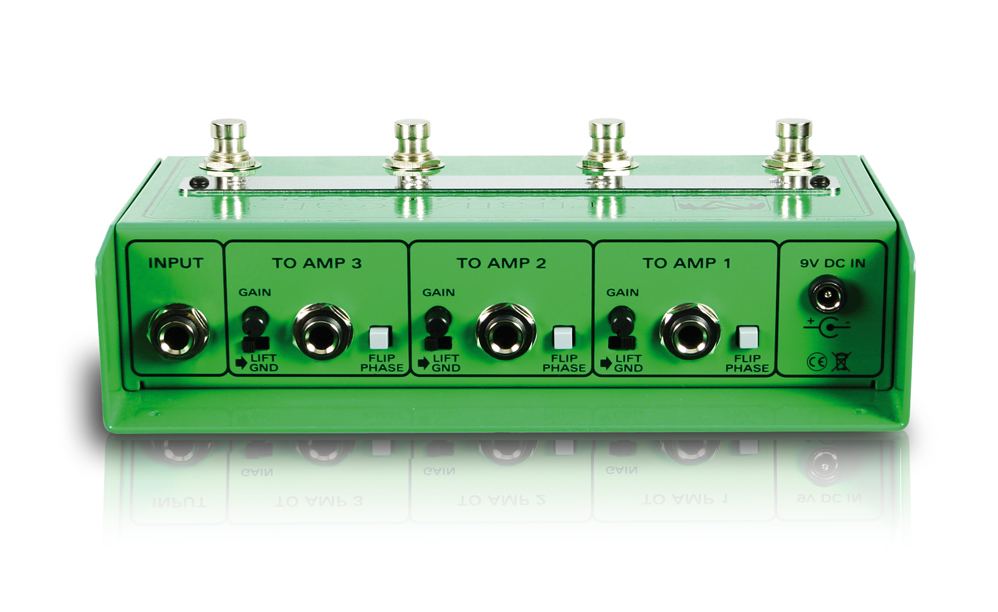Palmer Triage Amp Selector – the multi-amp manager – test report from bonedo.de
Anyone who assumes that Palmer products come from the Anglo-Saxon part of the world is wrong; Palmer is a German manufacturer who has been at home in the audio business for 25 years. The product range is divided into two areas: audio tools and musical instruments. While the audio tools range includes boxes, splitters, summing units, distributors and power suppliers, the musical instruments range includes tools that make the lives of guitarists, in particular, easier. Whether speaker simulators, junction boxes or audio splitters – for many musicians around the world these little helpers are now an indispensable part of their equipment.

In large guitar setups, for example that of guitar legend Eric Johnson, various guitar amps are used for various sounds. While fender amps are responsible for the clean sounds, Marshall amps take care of the lead sounds. Anyone planning a similar setup can hardly do without an amp selector. And this is the perfect application for the Triage Amp Selector from Palmer. It can be used to manage up to three guitar amps.
Details
In principle, the incoming guitar signal is split and routed to the respective guitar amp by the foot switch. As a result, adjustment of the output level can be easily regulated and effectively suppressed with the ground lift distortion loops. The phase can also be rotated, though this is only necessary in an emergency, or with incorrect assignment of a speaker cable or one of the two amplifiers. With phase errors there are generally cancellations, because the speaker membranes work against the various guitar amps, which manifests as a hollow, nasal tone. This creates a chamber filter effect, which thins the sound unpleasantly.
The Triage Amp Selector can split and switch at the same time. All outputs are equipped with Class A transistors, and galvanically separate the outputs from one another. A voltage transformer increases the 9-volt voltage of the external power supply up to around 35 volts, which achieves a very high dynamic, well above the normal degree of standard stompboxes.

Construction
The size of the green painted sheet-steel housing reminds me of the double effects from Boss. After all, the four foot switches need to be a certain distance apart, so that each can be individually switched with the toes. On the front, each of the three output channels has a jack, a ground lift switch, a gain controller and a mini switch for phase switching. A fourth jack is responsible for connecting the guitar. The gain controller set in the 12 o’clock position has about the same intensity as the guitar signal in its unworked state. Anyone who wants to tickle the amp a little with its pre-amplifier can easily add plenty of gain.
The signal is buffered and therefore not sensitive to interference or loss of sound, even with long cables. The only disadvantage is possible downstream fuzz distortion, especially with germanium transistors, which do not tolerate buffered guitar signals. They always need a direct connection to the guitar to work correctly. But newer pedals shouldn’t have a problem here, and this incidentally includes the fuzz pedals (Silikonfuzz) from the Big Muff range. The Palmer Triage can either be attached to the pedal board with a Velcro strap, or securely fixed with screws in the two drilled holes.
After connecting a standard 9-volt power supply unit, the cabling is basically self-explanatory. The guitar is plugged into the appropriate input, and the guitar amps in the jacks provided.
In my tests, I used a Marshall JMD and a Vox AC 30. The sound of the guitar signal seemed completely unaffected when compared to the unmodified, direct signal. Only the ability to adjust the volume makes you aware that the signal is active and buffered. This is better for long cable routes, as you don’t lose any trebles, and the sound is more direct and stronger overall. Thanks to the transformer, neither of the two amps hum if they are connected; the signal is fully galvanically separated. To activate multiple amps at the same time, you must first press the side-kick switch. Now a second amp can be added to the already activated amplifier, which allows creation of powerful walls of sound.

Conclusion
The Palmer Triage Amp Selector is a high-quality distribution or selection switch that cleanly and silently switches the guitar signal between up to three guitar amplifiers, and can even operate these at the same time, if needed, without distortion loops. Operation is self-explanatory and simple. Anyone who wants to play live with multiple guitar amps should definitely have a closer look at this device.
PROS
+ Simple, self-explanatory operation
+ High-quality components
+ Silent switching
+ No distortion loops thanks to high-quality isolating transformers
CONS
–
Technical data
– Two operating modes:
– Exclusive mode: only one of max. three amplifiers active
– Parallel mode: a maximum of three amplifiers in combination
– Muting of all outputs possible
– Inputs and outputs: 6,3 mm TRS jack sockets
– Maximum amplification: 12 dB
– All outputs are galvanically decoupled with transformers
– Click-free switching thanks to optocoupler
– 9 V DC power supply unit
– Power consumption: 120 mA max.
– Per output:
– potentiometer for level
– phase switch
– ground lift switch
________________________________________
Source: Bonedo.de, Germany: http://www.bonedo.de/artikel/einzelansicht/palmer-triage-amp-selector.html
Author: Robby Mildenberger
You can learn more about the Palmer MI Triage Amp Selector here:
http://www.palmer-germany.com/mi/de/TRIAGE-Amp-Selector-PTRIAGE.htm
Leave a Comment
You must be logged in to post a comment.











